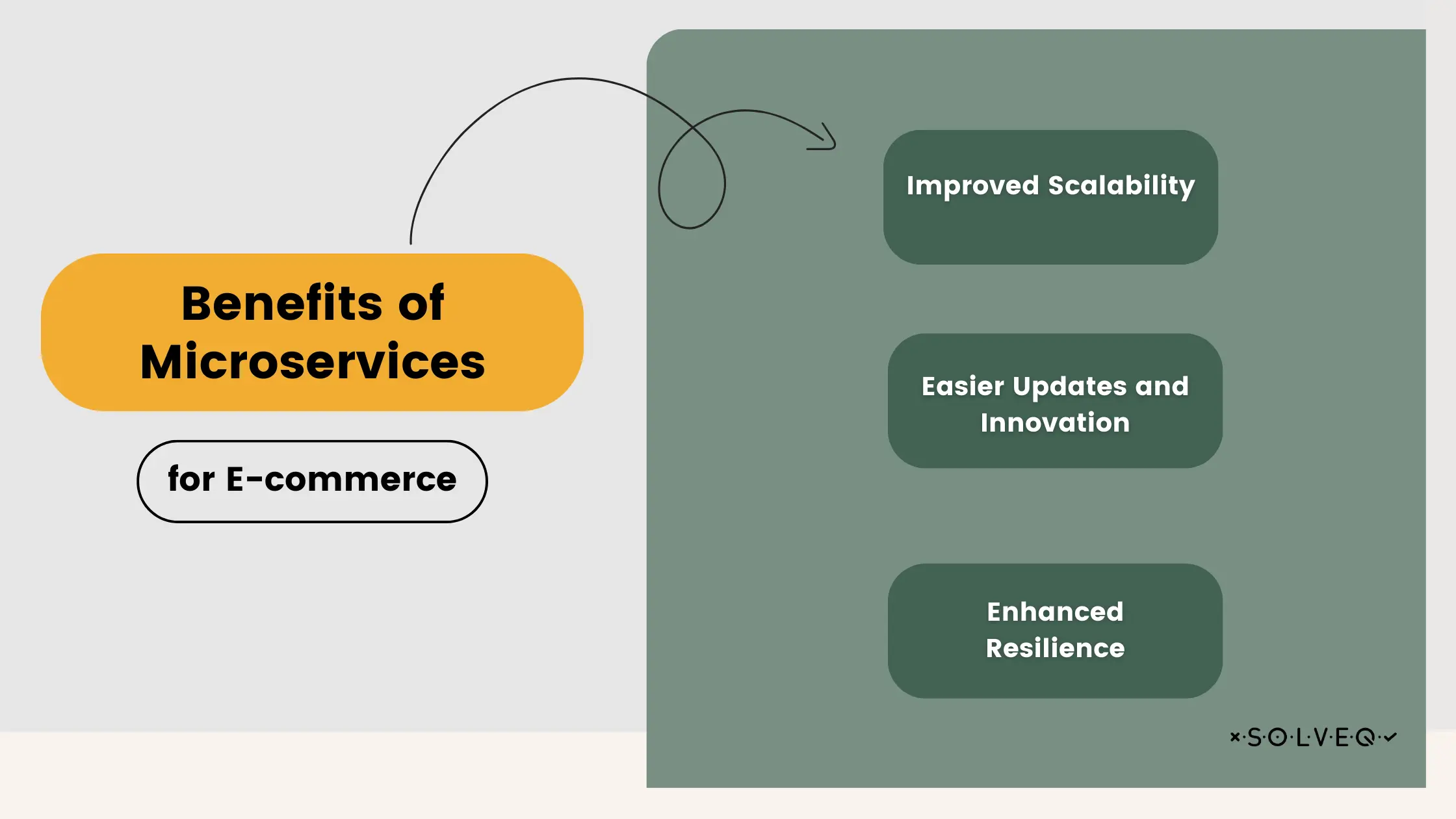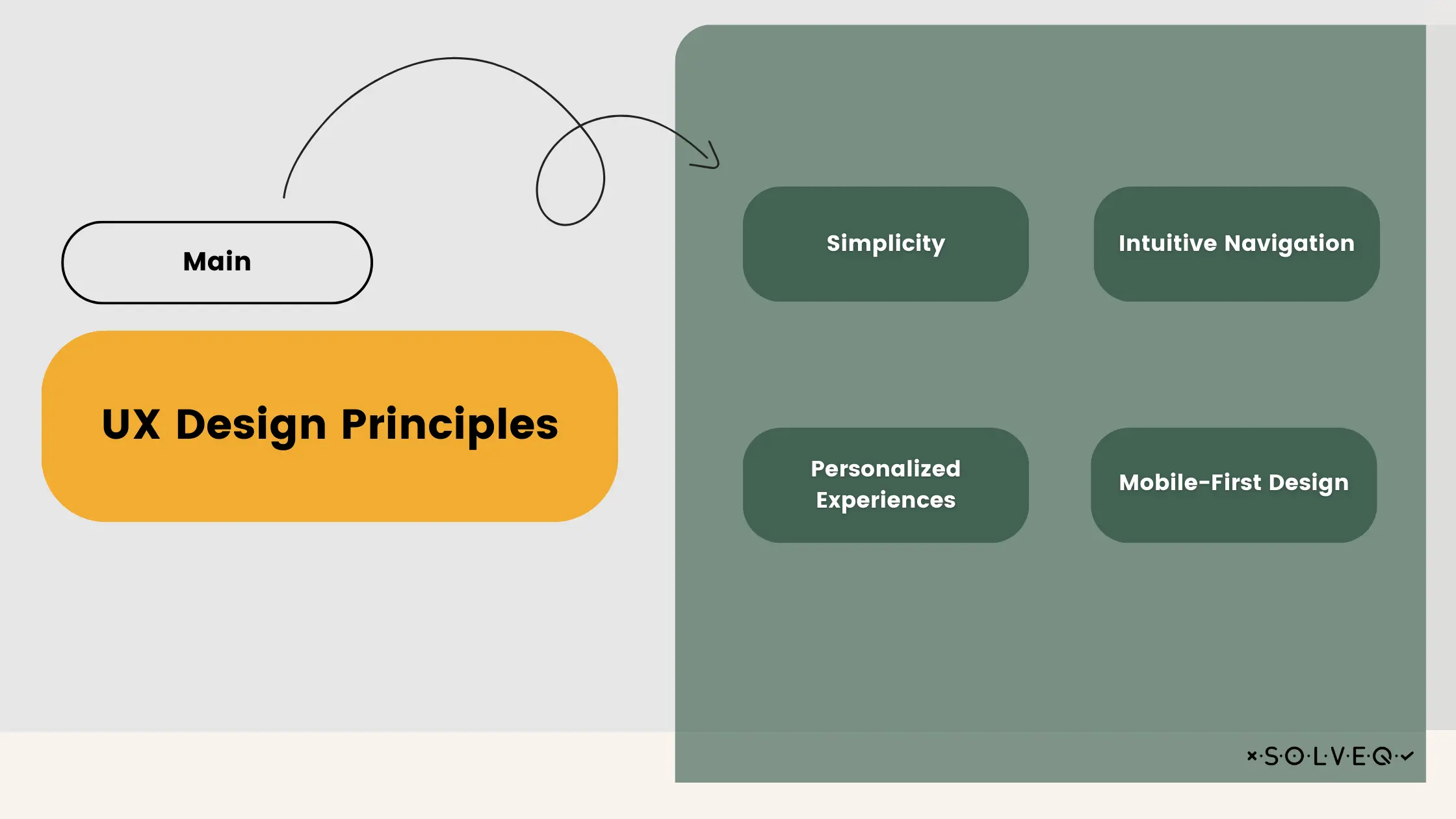From Outdated to Outstanding: How to modernize your eCommerce app?
22 Feb 2024 • 18 min read

Marcin Kulawik

In an era where e-commerce evolves at breakneck speed, businesses face the pressing need to adapt or risk obsolescence. Many grapple with outdated e-commerce apps that suffer from poor user experience, scalability challenges, and a failure to meet contemporary consumer expectations. This article explores the transformative power of adopting cross-platform development, leveraging microservices, and redesigning user experience (UX) - key strategies that are essential for modernizing e-commerce applications and staying competitive in this dynamic digital marketplace.
Why Modernize Your E-commerce App?
The landscape of digital commerce is constantly shifting, with new technologies emerging and consumer habits evolving. In this ever-changing environment, having an outdated e-commerce app can hinder your business's growth and competitiveness. Modernization is not just about adopting new technologies; it's about reimagining how your app can deliver value to your customers and stand out in a crowded market. Let's delve into the specific areas where modernization can make a significant impact.
Consumer Expectations
In the realm of e-commerce, consumer expectations are at an all-time high. Shoppers seek apps that provide a seamless, efficient, and engaging experience across all devices. They expect intuitive navigation, quick load times, personalized content, and streamlined checkout processes. In a market where options are plentiful, failing to meet these expectations can lead to a loss of customers and a decrease in sales. Modernizing your app is crucial to keeping pace with these expectations and delivering a shopping experience that meets the high standards of today's consumers.
Market Competition
The e-commerce sector is fiercely competitive, and a modernized app can be a key differentiator. An app that offers a superior user experience with advanced features like AI-driven recommendations, AR for product visualization, and seamless payment options can significantly enhance customer engagement and loyalty. In a marketplace where customer retention is as important as acquisition, a modernized app provides a crucial edge, helping businesses to not only attract new customers but also retain existing ones.
Technological Advancements
Technological advancements have made app modernization more accessible and effective. The rise of cloud computing, AI, machine learning, and AR/VR technologies offers e-commerce platforms new ways to enhance their apps. These technologies enable businesses to provide personalized experiences, improve operational efficiency, and offer innovative features that were once considered futuristic. Embracing these technological advancements can transform the shopping experience, making it more engaging and satisfying for the user.
Scalability and Maintenance
Older e-commerce apps often face significant challenges in scaling and maintenance. Modern e-commerce platforms, however, are designed with scalability in mind, allowing for efficient handling of increased traffic, expanded inventory, and growing customer bases. Additionally, modern apps are easier to maintain, with cloud-based solutions and modular architectures reducing the costs and efforts associated with updates and repairs. In an industry where agility and responsiveness are key, modernized apps offer the flexibility needed to quickly adapt to market changes and customer feedback.
Through modernizing your e-commerce app, you are not just upgrading technology; you are reshaping your business to thrive in the digital age. This transformation is essential for meeting the current and future demands of your customers and ensuring the continued growth and success of your business.

Elevate Your Reach with Cross-Platform Power
In today's rapidly evolving digital marketplace, e-commerce businesses are increasingly turning towards cross-platform development to maximize their reach and efficiency. This approach offers a strategic advantage in expanding your customer base while streamlining development efforts.
Definition and Benefits
Cross-platform development refers to the practice of developing software applications that are compatible with multiple operating systems or platforms, using a single codebase. This approach contrasts with native development, where separate codebases are used for each platform (e.g., iOS and Android).
The benefits of cross-platform development are substantial:
- Faster Development Cycles: With a single codebase for all platforms, the development process is significantly quicker. Updates and bug fixes can be rolled out simultaneously across all platforms, ensuring consistency in app performance and user experience.
- Cost Efficiency: Developing and maintaining one codebase rather than multiple native ones reduces costs. This efficiency is not just in terms of development hours but also in testing, deployment, and maintenance.
- Broader Audience Reach: A cross-platform app ensures your presence on all major platforms, thus widening your potential customer base. It eliminates the need to choose between iOS and Android markets, allowing you to cater to a more diverse audience.

Choosing the Right Framework
Selecting the appropriate cross-platform framework is crucial and should be based on several factors:
- App’s Needs: Consider the specific functionalities and performance requirements of your e-commerce app. Some frameworks are better suited for complex, high-performance apps, while others excel in simpler applications.
- Team Expertise: The technical skill set of your development team is pivotal. Choose a framework that aligns with their expertise or one that has a gentle learning curve to ensure a smooth development process.
- Community Support: Opt for frameworks with strong community support, like React Native or Flutter. A robust community means better access to resources, libraries, and troubleshooting support.
Frameworks like React Native and Flutter have gained popularity in the cross-platform space. React Native, developed by Facebook, allows for developing native-like apps using JavaScript and React. Flutter, Google's UI toolkit, enables the creation of natively compiled applications for mobile, web, and desktop from a single codebase using the Dart language.
Success Stories
Numerous e-commerce businesses have reaped significant benefits from migrating to cross-platform solutions. For instance:
Airbnb
Originally, Airbnb used React Native for their mobile app development to unify their engineering teams and to share code effectively between iOS and Android. Through this approach, they were able to expedite their development process, reduce costs, and maintain a consistent user experience across platforms. However, it's important to note that Airbnb eventually decided to revert to native development for various reasons, including the need for more complex, custom features that were challenging to implement in React Native. This case highlights both the strengths and limitations of cross-platform frameworks in different scenarios.
Alibaba
Alibaba, one of the world's largest e-commerce platforms, adopted Flutter for their Xianyu app, leading to significant improvements. By switching to Flutter, they enhanced the app's performance and user experience on both iOS and Android. This transition also resulted in higher developer productivity and faster time to market for new features. The success of Alibaba in using Flutter showcases the potential of cross-platform frameworks in handling large-scale, complex e-commerce applications.
Etsy
Etsy, a global online marketplace for handmade and vintage items, implemented a cross-platform strategy using React Native. This move allowed them to maintain a consistent and engaging user experience across different devices while streamlining their development process. By leveraging React Native, Etsy improved their app's performance and speed, resulting in enhanced customer satisfaction and increased sales.
These examples underscore the transformative impact of cross-platform development in the e-commerce sector. By embracing this approach, businesses can not only enhance their operational efficiency but also significantly improve their market reach and customer engagement.

Unlocking E-commerce Agility with Microservices: A Blueprint for Modernization
In the ever-evolving e-commerce landscape, agility and adaptability are key to staying competitive. Microservices architecture has emerged as a pivotal solution for businesses seeking to modernize their applications. This approach is not just a trend; it's a strategic move towards greater efficiency, scalability, and resilience.
Understanding Microservices
Microservices architecture is a method of developing software systems that focuses on building a suite of small, independent services, each running in its own process and communicating with lightweight mechanisms, often an HTTP-based API. This is in stark contrast to traditional monolithic architectures, where all components of an application are tightly integrated and deployed as a single unit.
In a monolithic architecture, any modification requires redeploying the entire application, which can be cumbersome and risky. Microservices, on the other hand, are modular by design, allowing for individual services to be updated, deployed, and scaled independently without impacting the entire system.
Benefits for E-commerce
For e-commerce applications, microservices offer several compelling benefits:
- Improved Scalability: Each microservice can be scaled independently based on demand, making it easier to manage peak loads during sales or holiday seasons.
- Easier Updates and Innovation: With smaller, independent components, updates and new features can be developed and deployed more rapidly and with less risk, fostering innovation.
- Enhanced Resilience: In a microservices architecture, the failure of a single service does not bring down the entire application, ensuring higher availability and a better user experience.

Implementation Strategy
Adopting microservices requires careful planning:
- Defining Service Boundaries: It's crucial to identify and define the boundaries of each service correctly. Each microservice should represent a distinct business capability.
- Managing Data Consistency: Microservices typically manage their own data, so ensuring data consistency across services is a challenge that requires implementing strategies like distributed transactions or eventual consistency.
- Seamless Communication: Microservices communicate through APIs, so designing efficient and secure communication channels is essential.
Real-world Examples
- Amazon: As one of the pioneers in adopting microservices, Amazon transformed from a monolithic architecture to microservices to handle its vast and varied inventory. This transition enabled them to manage individual product categories as separate services, greatly enhancing their scalability and speed of deployment.
- Netflix: Netflix is another prominent example. They moved to microservices to handle their growing user base and the increasing demand for streaming content. This shift allowed them to deploy updates faster, scale services independently, and improve overall system resilience.
- Zalando: European fashion giant Zalando transitioned to a microservices architecture to cope with their expanding product range and customer base. This move helped them improve site performance, streamline the addition of new features, and better handle traffic spikes.
These cases illustrate the transformative impact of microservices in the e-commerce sector. By breaking down complex applications into smaller, manageable pieces, businesses can achieve greater agility, improved performance, and faster innovation. The journey to microservices may be challenging, but the benefits for e-commerce platforms are clear and substantial.
Redesigning UX for Modern E-commerce Apps
In the rapidly evolving world of e-commerce, the user experience (UX) stands as a pivotal factor in determining an app’s success. A well-designed UX can significantly elevate conversion rates, foster customer loyalty, and positively influence brand perception. As online shopping behaviors continue to evolve, redesigning the UX for modern e-commerce apps becomes a critical endeavor for businesses looking to stay competitive and relevant.
The Importance of UX
User experience in e-commerce is more than just the look and feel of the app; it's about how easily and pleasantly users can find and purchase products. A well-crafted UX directly impacts the decision-making process of consumers. For instance, a seamless and engaging UX can lead to higher conversion rates, as users find it easier to navigate and complete purchases. Similarly, a positive user experience fosters customer loyalty, encouraging repeat visits and purchases. Moreover, the UX of an app significantly affects the overall brand perception, as it reflects the brand's attention to customer needs and technological adeptness.
UX Design Principles
Modern UX design for e-commerce should adhere to several key principles:

- Simplicity: The design should be clean and uncluttered, making it easy for users to find what they are looking for without feeling overwhelmed.
- Intuitive Navigation: Users should be able to navigate the app effortlessly, with logical pathways to follow for completing purchases.
- Personalized Experiences: Leveraging user data to create personalized experiences, such as recommending products based on past behavior, can significantly enhance user engagement.
- Mobile-First Design: With the increasing prevalence of mobile shopping, designing for mobile first ensures that the app provides an optimal experience on smaller screens.
UX Redesign Process
The process of redesigning the UX of an e-commerce app typically involves the following steps:
- User Research: Understanding the needs, preferences, and behaviors of your target audience through surveys, interviews, and market research.
- User Testing: Testing the current app with real users to identify pain points and areas for improvement.
- Iterative Design: Developing designs in iterations, allowing for frequent testing and feedback to refine the UX continually.
- Implementation: Working closely with developers to implement the redesigned UX, ensuring that the final product aligns with the intended design.
Tools and Technologies
Several tools and technologies can aid in the UX design process:
- Prototyping Tools: Tools like Sketch, Adobe XD, and Figma allow designers to create and test prototypes before development begins.
- Analytics Platforms: Platforms like Google Analytics and Hotjar provide insights into how users interact with the app, highlighting areas for improvement.
- User Feedback Solutions: Tools like UserTesting and Qualaroo can be used to gather direct feedback from users, providing valuable insights for the redesign process.
Redesigning the UX for a modern e-commerce app is a comprehensive process that requires a deep understanding of user needs, careful planning, and the right tools. By focusing on user-centric design principles and leveraging the latest technologies, businesses can create e-commerce apps that not only meet but exceed user expectations, driving success in the competitive digital marketplace.
Conclusion
In summary, modernizing e-commerce apps is essential for thriving in today's fast-paced digital economy, encompassing the adoption of cross-platform development, the integration of microservices, and the redesign of UX to meet evolving consumer demands. These strategies not only enhance user experience and operational efficiency but also ensure scalability and resilience. We encourage businesses to critically assess their current apps and consider these modernization strategies. Looking ahead, staying abreast of emerging technology trends in e-commerce app development is crucial for long-term success and maintaining a competitive edge in this ever-changing landscape.
Share:
Looking for expert development team?
Schedule a call with Tech Consultant

Marcin Kulawik
Founder and CEO of SolveQ. Huge fan of building things with purpose, agility, and having fun while changing the World. Loves his family, teammates, and nature.